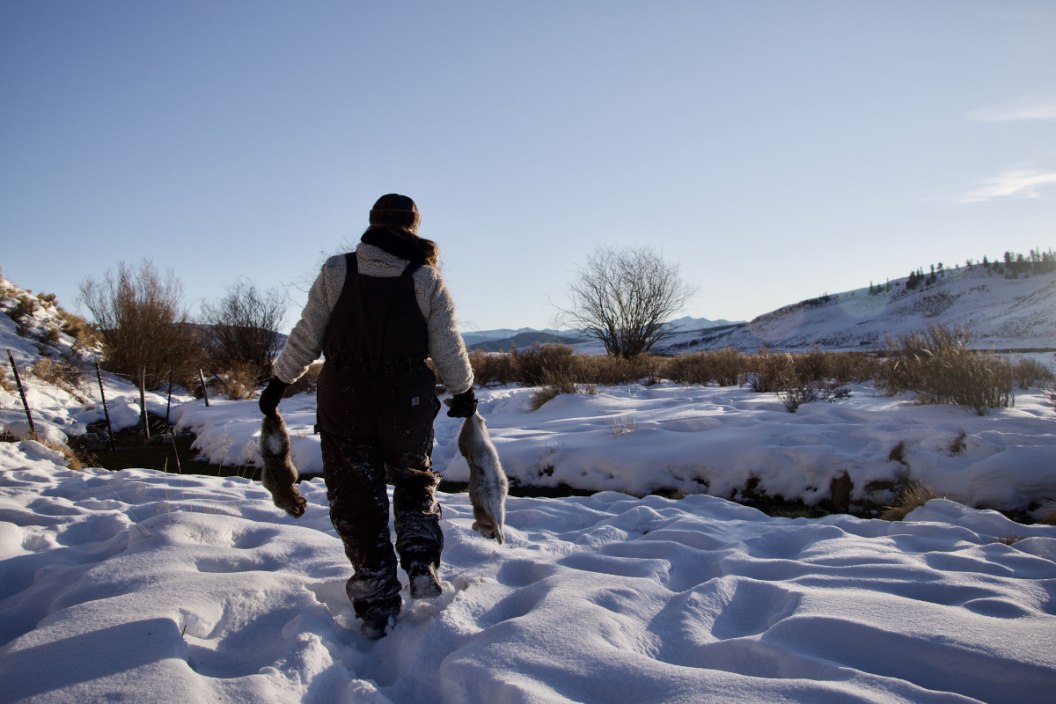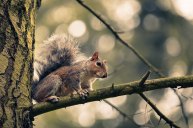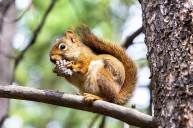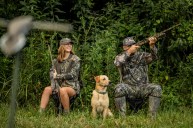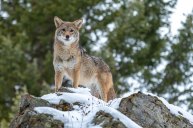Rabbit hunting is a fantastic way for both new and experienced hunters to spend more time in the field, add some wild game to their freezers, and brush up on their shooting and tracking skills. Small game seasons last for months and provide many hunting opportunities outside of big game seasons. Additionally, small game tags and hunting equipment can be really affordable, increasing access to the outdoors for folks who don't want to break the bank when it comes to participating in the outdoor activities we love. Hunting rabbits check all these boxes, plus they're absolutely delicious.
Thankfully, rabbit hunting is pretty simple. There are just a few things one needs to know before taking the trusty .22 for a walk in search of cottontails. After researching a little bit of information about rabbit life history, knowing how to identify rabbit species and fresh rabbit sign, and having appropriate gear for the hunt, you'll be ready to hit your local rabbit spots in no time.
Rabbit Boom and Bust Cycles
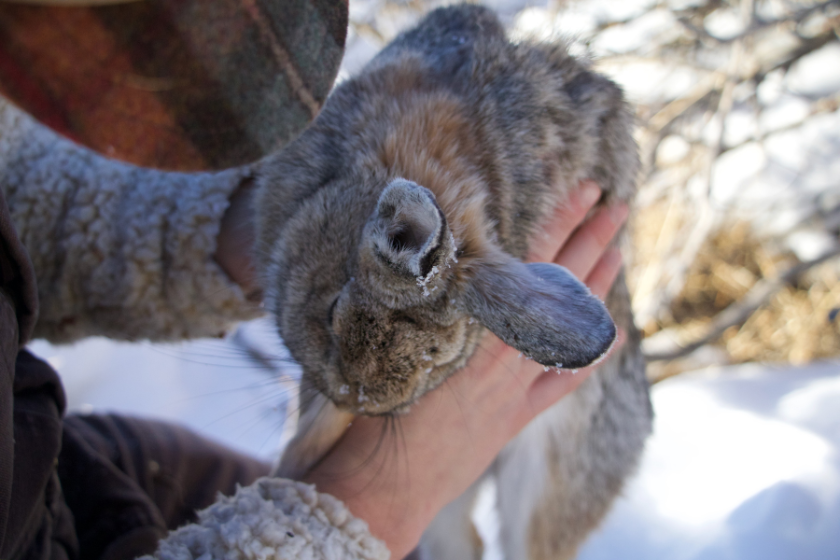
Gabriela Zalumbide
Most folks are familiar with cottontails. Their cute faces, fluffy, round bodies, and long ears are hard to mistake for any other critter. Cottontails prefer to eat things like leafy greens, flowering plants, and new vegetative growth when they can get it. However, during the dead of winter, they'll resort to eating bark, shrubs, buds, twigs, and other woody foods. Good shelter habitats near food sources are great places to look for cottontails. Spots like rock or debris piles, culverts, and clumps of shrubs are good locations to check for fresh rabbit sign. Tell-tale rabbit footprints, poop, or even trails carved into the snow can tell you the last time a rabbit was there.
Everyone's heard the colloquialism "breeding like rabbits," and this statement is certainly true when it comes to rabbit life history. Cottontails can breed up to five times a year and produce up to nine offspring per litter. That's a lot of rabbits!
As a result of this high rate of reproduction, rabbit populations are often referred to by biologists as having a "boom and bust" cycle. This concept can get a little complicated because it intertwines both rabbit breeding cycles and the breeding cycles of their predators. The gist is that a population of rabbits breed a whole lot for a short period of time, usually around five years. During that time period, predator numbers are almost always lower. As the rabbit population increases, the predator population begins to increase, too. Around the four-year mark of that time period, the increasing number of predators on the landscape begins to kill and eat rabbits faster than the rabbits can breed. As a result, the rabbit population decreases again. The predator population follows behind as the number of prey animals available decreases, too. As the number of predators shrinks, rabbit survival begins to increase again, and the boom and bust cycle begins all over again.
Planning your rabbit hunts during the boom period can help you fill your bag limits and freezers more quickly than during bust periods. However, keep in mind that your hunting also influences the local rabbit populations. If you repeatedly fill bag limits during bust periods, your rabbit population may have a harder time recovering than if you choose to shoot two rabbits per outing instead of four. It's important to have a personal set of hunting ethics in place prior to hitting the field.
Rabbit Species to Target
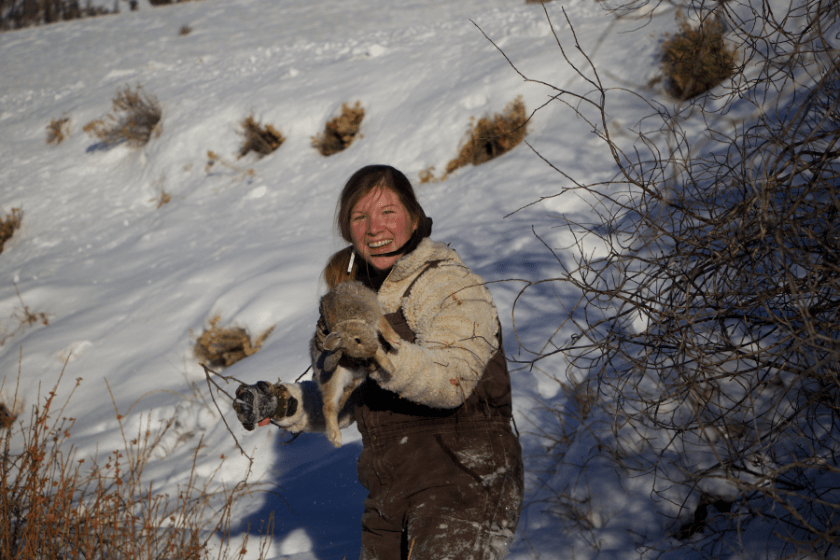
Gabriela Zalumbide
Eastern cottontails are the most common rabbit species in the US. Although there are quite a few subspecies of cottontails, most state game agencies don't differentiate between them in their hunting regulations. However, I would recommend doing a little bit of research to see which subspecies live near you. Some of them, like the New England cottontail, are protected and can't be hunted.
In addition to the cottontail subspecies, there are other species that are adjacent to cottontails. Hares are rabbits' closest relatives and have different life histories, habitats, and bag limits than cottontails. This means knowing how to identify different rabbit species not only comes in handy, but is vital so as to avoid any potential hunting violations. For example, depending on where you live, it may or may not be legal to hunt snowshoe hares. Snowshoe hares are not cottontails and hunters should be able to tell the difference between the two in areas where both species are found. Similarly, jackrabbits are not actually rabbits; they're hares, too. In Colorado, both snowshoe hares and jackrabbits are legal to hunt, but they have different bag limits than cottontails. Hunters are expected to know the difference.
.22 vs. Shotgun for Rabbit Hunting
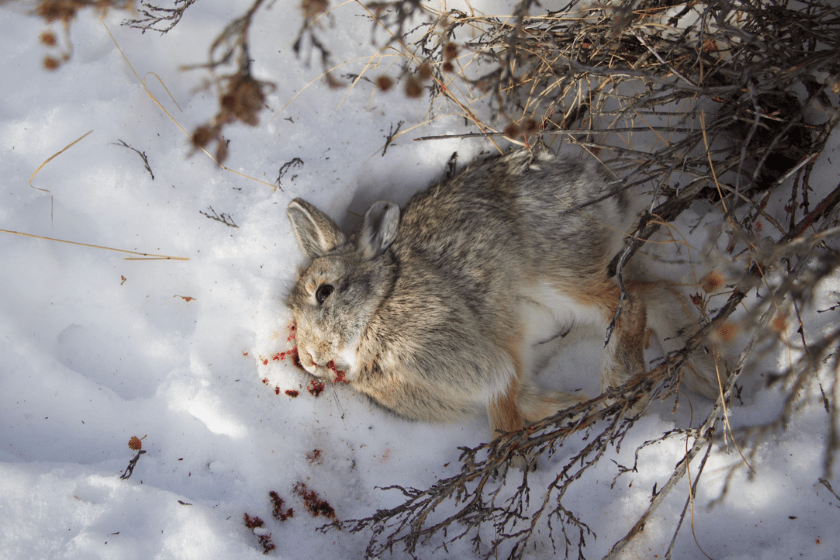
Gabriela Zalumbide
There are two types of shooting styles when it comes to hunting rabbits with firearms. One method is swinging a shotgun at moving rabbits, leading them like you would a wild bird as they run through thick ground cover. Although many folks enjoy rabbit hunting this way, I find that shooting shot shells at small game can damage a lot of meat when compared to hunting with a .22 rifle.
Rabbit hunting with a rifle can be a little trickier than using a shotgun, but preserving all that delicious white rabbit meat is worth it. When using a .22 (or the comparable .17 HMR for that matter) to rabbit hunt, it's closer to spot-and-stalking a deer in the woods rather than of wingshooting a flying dove. Personally, it's my preferred way to do it. When I spot and stalk rabbits in Colorado, the first thing I do is look for fresh rabbit sign like fresh tracks or scat in the snow. Once I've located a good rabbity spot, I start still-hunting through the habitat, keeping my eyes peeled for little fluffballs perched on top of the snow. Once I've spotted a rabbit curled up in the sun, under a bush, or feeding on some rabbitbrush, I get my rifle ready and wait for a good, steady shot. Once the rabbit presents a clear shot to either its head or its vitals, I pull the trigger.
After my pack's weighed down with a few rabbits, I hang them in the cold for the night and let the meat rest until the next day. I've found that this makes rabbits easier to skin because they aren't so fragile, and it keeps extra hair off the meat when I get to work processing them. Aging the meat after skinning can also tenderize the rabbit. With other species, it can give the meat a milder taste, but rabbits are already so mild that I don't really notice a difference in flavor. I use a knife with a sharp, replaceable scalpel blade to clean all my rabbits. Once they're all skinned and quartered, I either seal them up and stick them in the freezer or brine them for dinner the following night. Brining rabbit meat helps it retain moisture, stay tender, and get deliciously salty. I'd recommend it for any rabbit recipe you're making, whether it includes braising, grilling, sautéing, or baking in the oven.
Rabbit hunting can be delightfully addictive and the tasty meals that come at the end of a hunt are well worth the effort. This winter, I highly suggest you pick up the ol' .22 and see if you can bag some bunnies for the freezer.
